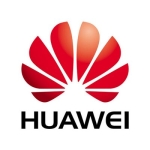We use HPE Ethernet Switches in hospitals and governments.
We have some problems with the performance of our HPE Ethernet Switches because they are old.
I have used HPE Ethernet Switches within the past 12 months.
The solution is highly stable.
We have one client using the solution.
The support of HPE Ethernet Switches is responsive and helpful.
HPE Ethernet Switches are more difficult to implement than other solutions, such as Aruba, because the configuration has to be done one by one, it's not saved centrally. You are not able to automatically configure them across the hardware.
I utilized a significant amount of HP technology in order to create a stacking configuration, incorporating various models as needed. This was because Aruba, which is a well-established brand, is frequently used for stacking purposes. However, in our particular scenario, I utilized HPE Ethernet Switches, despite it being an older technology, and decided to stack them. To provide a specific example, I utilized the HP 2930 model, which is stackable as per the guidelines provided by the model guide. Additionally, I integrated artificial intelligence to further optimize the process. However, for improved results, scaling up is necessary.
I did the implementation of the solution.
The price of the solution is expensive.
I rate the price of HPE Ethernet Switches a ten out of ten.
I would recommend this solution to others who have traditional environments.
I rate HPE Ethernet Switches a ten out of ten.















